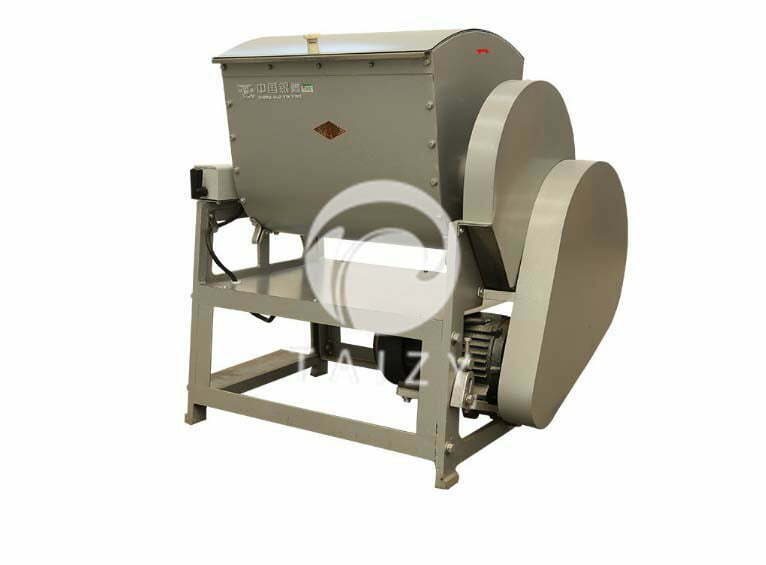ในบรรดาประเทศในเอเชียตะวันออกเฉียงใต้ อินโดนีเซียมีฐานประชากรที่ใหญ่ที่สุด และอุตสาหกรรมอาหารก็มีความต้องการสูง รายได้ครัวเรือนธรรมดามากกว่า 50% ถูกใช้ไปกับอาหาร อย่างไรก็ตาม อินโดนีเซียมีรากฐานของเครื่องจักรแปรรูปอาหารที่อ่อนแอและโดยพื้นฐานแล้วต้องอาศัยการนำเข้า
เครื่องแปรรูปอาหารอาศัยการนำเข้าและตัวแทนส่วนใหญ่เป็นชาวจีน

อินโดนีเซียเป็นประเทศที่มีประชากรมากเป็นอันดับสี่ของโลก ประชากรจำนวนมากทำให้เกิดอุตสาหกรรมแปรรูปอาหารที่เฟื่องฟู การค้าขายเป็นเรื่องปกติสำหรับคนที่นั่น มีโรงงานแปรรูปอาหารขนาดใหญ่และขนาดกลางประมาณ 4,700 แห่ง และธุรกิจขนาดเล็กมากกว่า 77,000 แห่งในอินโดนีเซียซึ่งมีพนักงานมากกว่า 3 ล้านคน องค์กรเหล่านั้นครอบครอง US $ 30 พันล้านของทั้งหมด ซึ่งองค์กรขนาดใหญ่และขนาดกลางคิดเป็น 85%
อุตสาหกรรมเครื่องจักรแปรรูปอาหารของอินโดนีเซียยังพัฒนาน้อย ส่วนใหญ่ต้องพึ่งพาการนำเข้า ซัพพลายเออร์คือจีน ญี่ปุ่น และเกาหลีใต้ เครื่องจักรนำเข้าประกอบด้วยเครื่องผสมแป้งเชิงพาณิชย์ เครื่องบรรจุ เครื่องทอด เครื่องอบ เครื่องทำความเย็น และเครื่องบรรจุสุญญากาศ เป็นต้น
เครื่องทำอาหารจีนมีความได้เปรียบอย่างมากในตลาดอินโดนีเซีย
สำหรับบริษัทจีน อินโดนีเซียเป็นตลาดที่สำคัญมาก ในช่วงไม่กี่ปีที่ผ่านมา เศรษฐกิจของอินโดนีเซียเติบโตอย่างต่อเนื่อง ความสามารถในการซื้อของประชาชนก็เพิ่มขึ้น อุตสาหกรรมค้าปลีกและการจัดเลี้ยงเต็มไปด้วยความเข้มแข็ง และความต้องการเครื่องทำอาหารก็เพิ่มมากขึ้นเรื่อยๆ เครื่องแปรรูปอาหารจีนมีข้อได้เปรียบอย่างมากในตลาดอินโดนีเซีย เมื่อเขตการค้าเสรีจีน-อาเซียนเสร็จสมบูรณ์ การส่งออกเครื่องจักรของจีนไปยังอินโดนีเซียจะค่อยๆ ลดภาษีลงจนเหลือศูนย์ และพื้นที่ตลาดในอนาคตก็กว้างมาก
เมื่อขยายสู่ตลาดอินโดนีเซีย ซัพพลายเออร์ของจีนจะต้องให้ความสำคัญกับคุณภาพ ภาพลักษณ์ของแบรนด์ เจ้าหน้าที่ด้านเทคนิคมืออาชีพ และความสามารถในการบริการหลังการขาย นอกจากนี้ยังจำเป็นต้องรักษาความสัมพันธ์อันดีกับตัวแทนในพื้นที่ด้วย
เครื่องผสมแป้ง เป็นที่ต้องการอย่างมากในอินโดนีเซีย
ประชากรในเมืองของอินโดนีเซียคิดเป็น 52% ของประชากรทั้งหมด และกำลังเติบโตในอัตราประมาณ 3% ต่อปี เครือซูเปอร์มาร์เก็ตขนาดใหญ่สมัยใหม่และร้านสะดวกซื้อที่เปิดตลอด 24 ชั่วโมงได้ผุดขึ้นมา ผลักดันตลาดผู้บริโภคชาวอินโดนีเซียให้รักษาการพัฒนาอย่างรวดเร็ว อาหารเป็นการบริโภคหลักในแต่ละวันของผู้คน และรายได้เฉลี่ยของครอบครัวประมาณ 53% ถูกใช้ไปกับการรับประทานอาหาร
เดิมทีอินโดนีเซียถือว่าข้าวเป็นอาหารหลักแบบดั้งเดิม แต่ผลิตภัณฑ์แป้งได้รับความนิยมจากผู้คนมาเกือบ 20 ปีแล้ว แต่ละครอบครัวมีเครื่องผสมแป้งเพื่อตอบสนองความต้องการในแต่ละวัน ผู้ผลิตแป้งรายใหญ่ที่สุดของอินโดนีเซียมีผลผลิตต่อปีมากกว่า 3.57 ล้านตัน และมีส่วนแบ่งตลาดมากกว่า 66%
ผู้บริโภคชาวอินโดนีเซียก็ชอบขนมหวานเช่นกัน ซึ่งทำให้อุตสาหกรรมสายการผลิตบิสกิตเติบโตอย่างรวดเร็ว ปัจจุบันมีผู้ผลิตบิสกิตขนาดใหญ่และขนาดกลางประมาณ 20 รายในอินโดนีเซีย


แสดงความคิดเห็น